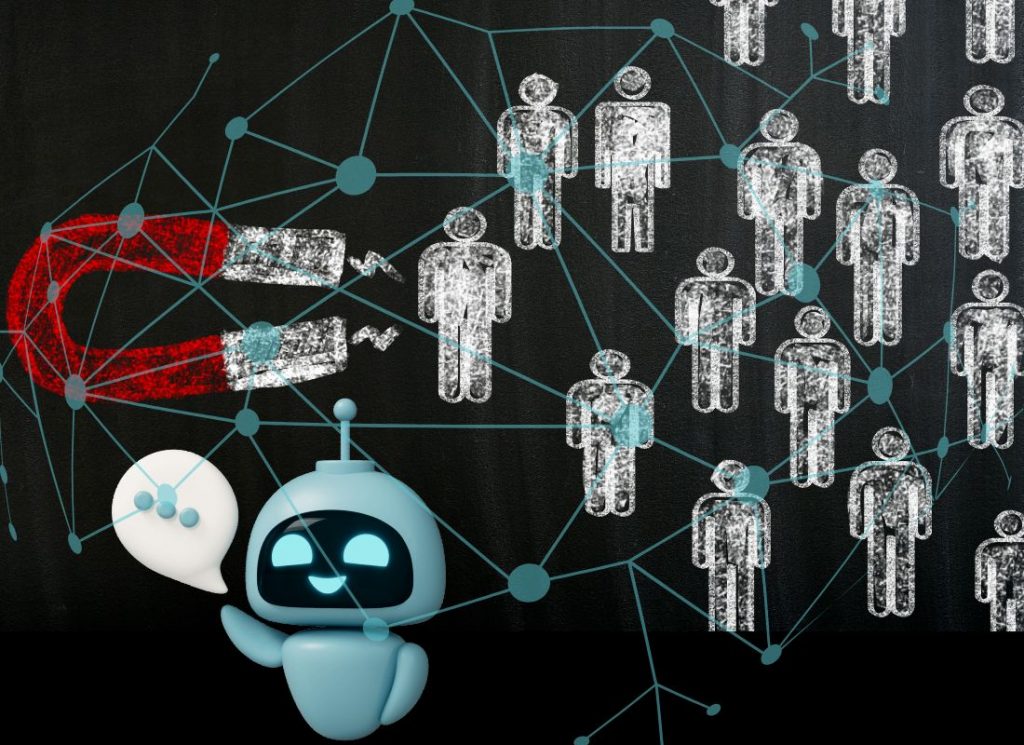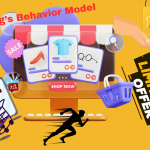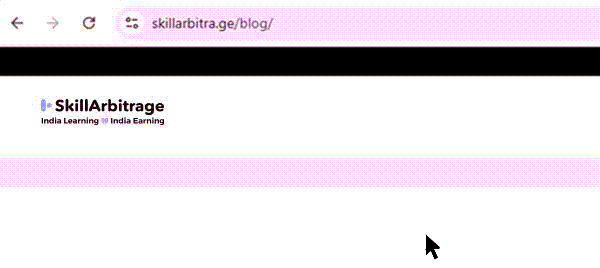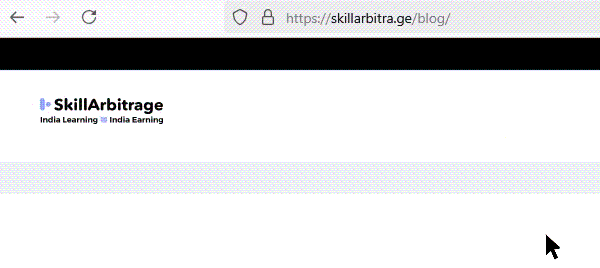Customer education is the hidden pathway for Indian freelancers to escape the fleeting churn of viral content and build a stable, high-value career in content creation. This article reveals how leveraging customer education graphs can help freelancers transition from replaceable copywriters to indispensable consultants.
Table of Contents
Previously on The AI-Powered Brand Consultant…
Raghunandan believed AI-driven, non-stop content creation was the biggest disruptor in marketing. But his father, Parvathishankar, revealed the deeper force at play – mimetic desire.
Through René Girard’s hidden branding philosophy, Raghunandan learned that the most powerful brands don’t chase trends. They manufacture demand by controlling what people aspire to.
But when Adityan, the viral video whiz, challenged him, Raghunandan realized the real battle wasn’t just between AI-powered strategies. It was between momentary virality and long-term influence.
Now, he knows that winning the branding game is just the first step. To truly control demand, he must master the AI-Assisted Networked Path. The key to transforming from a copywriter into a customer education consultant…
(Continued…)
Raghunandan sat across from his father, his fingers drumming on the wooden armrest. He stared out the window, watching the evening sun cast long shadows. Then, at last, he spoke.
“I am starting a video marketing agency.”
Parvathishankar folded his newspaper. “And why is that?”
“Videos are the future, Father. Every brand wants viral content. Writing is slow. Nobody reads anymore.”
Parvathishankar waited. He sensed there was more.
Raghunandan exhaled sharply. “It is not just about the future. I have seen how swiftly videos spread and make an unknown brand a household name overnight. And I have seen who does it best.”
Parvathishankar raised an eyebrow. “And who, pray, is this marketing sorcerer?”
Raghunandan’s jaw tightened. “Adityan Chandrasekaran Mahadevan Venkataraghavan Ramasubramanian.”
Raghunandan exhaled. “He has promised Swathi the world. He claims he will make her perfume an overnight sensation. He has the budget, the resources, and the algorithms. If his campaign works, she will not need me anymore.”
The room fell silent.
Parvathishankar leaned back. “Ah. So this is about more than business.”
“It is about proving I am not just a reflection of him. If I cannot show I have something better, I become just another imitator in his shadow.”
Parvathishankar studied his son. “Do you believe in what you are building? That knowledge, not just virality, sustains a brand?”
Raghunandan met his gaze. “I do.”
“Then,” Parvathishankar said, “let us prove it.”
A voice rang through the doorway.
“Uncle! Are you home?”
Swathi.
Parvathishankar’s face lit up. “Ah, Swathisundari! Come in, come in. You bring light into this house.”
She stepped inside, the faint trace of jasmine lingering in the air. A scent, Raghunandan noted bitterly, from her own perfume. A perfume Adityan might soon turn into a global sensation.
“I hope I am not intruding,” she said, offering a warm smile.
“Nonsense,” Parvathishankar said, waving a hand. “Sit, child. Tell me, how fares the empire of fragrance?”
Swathi sighed. “Busy. But now, it seems, on the verge of something much bigger.”
Parvathishankar lifted an eyebrow. “Oh?”
“Adityan has taken an interest.”
Raghunandan stiffened.
Swathi brightened. “He is remarkable, Uncle. He has worked with luxury brands across the world. Paris, Milan, New York, you name it. He understands virality like no one else. He says he can make my perfume famous in weeks.” She glanced at Raghunandan and then back at Parvathishankar. “This might be the chance of a lifetime.”
Raghunandan said nothing.
Parvathishankar tapped a finger against the armrest. “Virality is fascinating. Like wildfire, it spreads fast and consumes everything. Then he snapped his fingers, “It burns out.”
Swathi tilted her head. “But is that not the point? A brand must first capture attention. If no one knows about it, how can it grow?”
Parvathishankar nodded. “True. But tell me, child. When a fire burns, what remains?”
She frowned.
“Ash,” he said. “Smoke. The memory of something that was.”
Swathi shifted uncomfortably. “But surely, virality does not mean destruction.”
“Not necessarily,” Parvathishankar conceded. “But it is fleeting. A moment in the sun, then the world moves on.” He leaned forward. “A brand is not just what catches the eye. It is what lingers in the mind. The difference between virality and longevity is the difference between a shooting star and the North Star. One dazzles for a moment; the other guides travelers for centuries.”
Swathi was quiet now, absorbing his words.
Parvathishankar continued, “Adityan promises you reach. But tell me. When the campaign ends, when the algorithm shifts, when the world forgets. Who will remain?”
Swathi hesitated.
Raghunandan’s voice was steady. “I will.”
Swathi looked at him. Really looked at him.
Parvathishankar leaned back. “A brand must not only be seen. It must be remembered.” He glanced between them. “And sometimes, Swathi, the same is true for people.”
Swathi traced the rim of her teacup. “I understand, Uncle, but what choice do I have? Sales are plateauing. The initial buzz is gone. Influencers move on. Algorithms forget you exist.”
She exhaled. “I need my viral moment.”
Parvathishankar watched her, then asked, “And after that?”
Swathi blinked. “What do you mean?”
“Say Adityan delivers. Say you sell out in a week. Then what?” He gestured at her empty cup. “Do you keep pouring more into the fire? Pay for the next viral moment? And the next?”
Swathi hesitated.
“The problem with chasing virality,” he said, “is that you are always chasing. A brand that chases cannot lead.”
She folded her arms. “Then what do you suggest?”
Parvathishankar leaned forward. “The Customer Education Graph.”
Swathi frowned. “I have never heard of it.”
“No,” Raghunandan said, “because most people chase attention instead of holding it.” He pulled out his laptop and turned the screen towards her. “Virality is short-term memory. Knowledge graphs are long-term memory. AI learns relationships between content, reinforcing recall. That’s how we make brands unforgettable.”
On the screen, nodes and connections formed a web. An AI-driven map linking Swathi’s perfume ingredients, brand story, and customer testimonials into a structured journey.
Parvathishankar tapped the table. “Adityan gives you a megaphone. We give you a map.”
Swathi absorbed this. The fire in her eyes shifted. Still ambitious, but now considering.
“But does it work?” she asked.
Parvathishankar chuckled. “Let us show you.”
Raghunandan met her gaze unwaveringly. “Let us prove it. Beyond doubt.”
Swathi looked between them. “How?”
Parvathishankar smiled. “Simple. Let Adityan have his viral campaign. And you,” he said, turning to Raghunandan, “will build something that lasts.”
Swathi nodded slowly. “I should go. I need to think.”
She rose, her presence still lingering as she left.
Parvathishankar exhaled and turned to Raghunandan. “Now, listen closely. Before we build, we must understand.”
He straightened. “The first mistake people make is seeing marketing as persuasion. It is not. It is education. The best brands are not the loudest. They are the most instructive.”
“We are not just selling perfume. We are rewiring perception.”
What is a customer education graph?
“You’ve explained why viral content isn’t enough,” Raghunandan admitted, “but I still don’t see how I am to beat Adityan. He’s flooding the internet with videos. I can’t outpost him. I can’t out-advertise him. And if I try, I’ll burn out before I even come close.”
Parvathishankar chuckled, shaking his head.
“Ah, my dear son, you’re thinking like a content creator, not a consultant. You’re still chasing attention when you should be compounding it. Adityan is playing a short-term game. His content is like fireworks – brilliant and loud, but gone in an instant. You, however, must build streetlights. Illuminating pathways that guide people deeper and deeper into your world.”
Raghunandan frowned. “I don’t follow.”
Parvathishankar leaned forward. “Tell me, have you ever been lost in a new city?”
Raghunandan nodded. “Yeah, I usually rely on major landmarks. Roundabouts and intersections. The streets all look the same.”
“Exactly.” Parvathishankar’s eyes gleamed. “And that’s exactly how the human brain works. We don’t store information in isolation. We store it in networks. Every new idea needs a connection point. An intersection, a chauraha if you will. The more pathways that lead to it, the more deeply it embeds in memory.”
Raghunandan’s eyes widened.
Parvathishankar smiled. He had him now.
“This is the difference between content creation and content connection.” His voice was calm, deliberate. “Right now, everyone is obsessed with how AI can generate more content. But the real power is in how AI can help you link content, making it easier to navigate, easier to remember, and ultimately, impossible to ignore.”
Raghunandan’s mind raced.
Parvathishankar nodded approvingly. “Now you’re thinking. Let me show you why this is inevitable.”
He pulled out his notepad and began to sketch.
“First, understand this: advertising is customer education. But education itself is just graph memory. Just nodes of information connected by pathways. The more connections, the stronger the memory.”
He pointed at the sketch.
“Let’s say you walk into an unfamiliar city – unconscious incompetence. You don’t even know what you don’t know.”
“You explore a little. Now you’re aware of your ignorance – conscious incompetence.”
“You start navigating using landmarks – conscious competence.”
“And finally, you become so familiar with the city that you move effortlessly – unconscious competence.”
Raghunandan nodded slowly.
“This is how people learn. This is exactly how brands should educate customers. Right now, most content marketing is just random buildings without roads. Each video, blog post, or ad sits in isolation, forgotten as soon as it’s consumed.”
Parvathishankar flipped the page.
“Now imagine you build a connected city. A customer education graph. Each new piece of content is linked to others. AI remembers what a visitor has seen before and suggests their next step. Every question has an obvious next answer. Every touchpoint reinforces the brand. Instead of hoping people remember you, you design the paths they take.”
Raghunandan exhaled sharply. “This is why Wikipedia works.”
Parvathishankar grinned. “Yes! Wikipedia isn’t valuable because it has millions of articles. It’s valuable because it has millions of linked articles. Netflix doesn’t just have content. It guides you to the next binge-worthy show. HubSpot doesn’t just write blog posts. It maps the customer journey, ensuring every resource deepens trust.”
Raghunandan was silent for a moment. Then he chuckled.
“Adityan is trying to impress everyone with his fireworks. But I’ll build streetlights. He’ll burn bright for a moment, but I’ll be guiding people forever.”
Parvathishankar nodded. “Now you understand. AI isn’t just a content engine. It’s the architect of the customer education experience.”
He took another sip of his coffee.
“You don’t need more content. You need connections. And when you master that, my dear boy… you won’t just be a copywriter. You’ll be a customer education consultant.”
Raghunandan smiled. The battle wasn’t about who could shout the loudest.
It was about who could build the most unforgettable path.
And he had just found his weapon.
The customer education graph as a funnel
“Most marketers think of funnels as just lead generation tricks. But real funnel design isn’t about forcing people through steps. It’s about guiding them through a city they’ve never seen before.”
He tapped the notepad.
“Look at this again. These four stages? They are your funnel.”
Stage 1: Unconscious incompetence → Unaware prospect
Parvathishankar drew a tiny dot at the edge of the paper.
“This is where your customer starts. They don’t even know they have a problem. If you try to sell them something now, it won’t work because they’re not looking for a solution. Your only job here is to make them aware of what they don’t know.”
Raghunandan’s mind raced. “Like when Swathi’s perfume customers didn’t know scent could change memory recall?”
“Exactly!” Parvathishankar snapped his fingers. “Adityan floods the market with spectacle, but you? You create category-defining insight. Your content should reveal a missing piece of their life. Something that shifts their perspective. Once you do that…
He drew an arrow to the next stage.
Stage 2: Conscious incompetence → Problem-aware prospect
“Now, they realize they have a problem. But they don’t know how to solve it.”
Raghunandan nodded. “This is where most marketers go wrong. They either bombard the audience with product pitches or leave them stuck in confusion.”
“Correct. Instead, you build trust-based education. Guide them through the terrain. Show them why different solutions exist, and most importantly, why most don’t work.”
Parvathishankar flipped the page and wrote one sentence in large, bold letters:
The best way to make a sale is to eliminate every alternative before you pitch.
“This is the secret to expert positioning,” he explained. “You don’t just list why you’re the best. You subtly dismantle every other path before they even consider it. By the time they reach the next stage…
Another arrow.
Stage 3: Conscious competence → Solution-aware prospect
“They are now actively looking for a solution.”
Raghunandan sat forward. “So this is where we actually introduce the product?”
“Yes. But not like a street vendor shouting, ‘Buy now!’” Parvathishankar smirked. “You must present your solution as inevitable. Frame it as the natural next step. The final puzzle piece they were always meant to find.”
“Like how Netflix doesn’t sell streaming. It sells ‘What to watch next?’”
Parvathishankar beamed. “You’re getting it, boy. People hate making decisions. The best funnels don’t push. They remove friction. They make the next step so obvious that taking action feels effortless.”
He tapped the last stage.
Stage 4: Unconscious competence → Transformed customer
“This is where they don’t just buy. They adopt your worldview.”
Raghunandan exhaled. “And once they reach this point…”
“They stay with you,” Parvathishankar finished. “Because you’re no longer a vendor. You’re the one who showed them the way.”
For a long moment, the room was silent except for the rhythmic ticking of the old clock.
Raghunandan finally spoke.
“So… I don’t just need a viral campaign. I need a funnel of inevitability. One that makes them realize they need me before they even know I exist.”
Parvathishankar took a final sip of coffee, setting the cup down with a soft clink.
“Now you understand, my son.”
This wasn’t about marketing.
This was about leading.
And leaders don’t chase.
They build the path.
The ‘self-writing’ AI funnel that Indian freelancers can deploy today
Parvathishankar leaned back, exhaling slowly. “Raghunandan, do you know why most brands struggle with content?”
His son frowned. “Bad copy?”
“Wrong.” His father tapped his temple. “They don’t guide their customers through learning.”
Raghunandan blinked.
“Every successful brand builds a customer education graph. Not a blog, not an email sequence, but a system that moves people from confusion to clarity, making them feel smarter every step of the way.”
Step 1: Build an AI-powered customer education graph in 30 minutes
Parvathishankar clicked open his laptop. “We’ll use AI for this. Open these tools.”
Tools you’ll need (all freelancer-friendly):
- Miro (for mapping the education journey)
- Notion AI (for summarizing customer insights)
- ChatGPT + Claude AI (for generating content outlines)
- Descript (for AI-enhanced voiceovers & video tutorials)
- Tome.app (for AI-generated client presentations)
Raghunandan followed along, opening Miro. His father sketched four stages:
Step 2: The 4-stage customer education graph (Miro framework)
- Unconscious incompetence (They don’t know they need the product)
- Conscious incompetence (They realize the problem but don’t know the solution)
- Conscious competence (They understand but need guidance)
- Unconscious competence (They master it and evangelize the brand)
“This,” Parvathishankar said, “is how customers learn. And brands that teach win.”
Step 3: AI-powered content to guide each stage
Raghunandan cracked his knuckles. “So, how do we fill this with content?”
“AI,” his father was enjoying this. “Watch.”
Unconscious incompetence (They don’t know what they don’t know)
AI tactic: Use ChatGPT + Claude AI to generate high-engagement ‘curiosity gaps.’
Example: viral tweet hooks, ‘Did you know?’ LinkedIn posts.
Conscious incompetence (They realize the problem exists)
AI tactic: Use Notion AI to auto-summarize research and insights into snackable LinkedIn carousels.
Example: “5 signs you’re wasting money on marketing” (with AI-generated data points).
Conscious competence (They know the solution but need help)
AI tactic: Use Tome.app to auto-generate a beautiful interactive ‘Beginner’s Guide’ for their problem.
Example: A startup selling marketing automation software gets a Tome-powered mini-course.
Unconscious competence (They master it and share it)
AI tactic: Use Descript to AI-generate short, high-retention video guides.
Example: “Watch this 90-second tutorial on how to 3X your email conversions.”
Raghunandan raised an eyebrow. “Okay, this is powerful. But how do I get brands to pay big money for this?”
Step 4: How to sell this to clients
Parvathishankar smiled.
“Because no one sells this yet. Clients don’t need more content. They need smarter content. A structured learning journey.”
An AI-powered pitch template for Indian freelancers
Subject: “You don’t need more content. You need an AI-powered customer education system.”
Hey [Client Name],
Most brands waste money on scattered content. But the most successful ones, like Apple, HubSpot, and Tesla, win because they build customer education graphs.
I create AI-powered education funnels that:
Make customers feel smarter with each interaction.
Convert casual readers into loyal buyers.
Automate 80% of your content creation.
Happy to send over a 2-minute Loom video showing how it works for [client’s industry].
Want to see?
[Your Name]
Final lesson: The mindset shift
AI isn’t replacing freelancers. It’s replacing lazy ones.
Parvathishankar shut the laptop.
“Do you see the shift now?”
Raghunandan exhaled. “AI isn’t about making more content. It’s about connecting more content.”
His father grinned.
“Exactly. This is the mindset shift you need to bring. Every piece of content feeds into the next. These connections create learning outcomes. The learning outcomes are engagement, conversion, and retention. This is what a brand needs, not just pure viral attention. A viral video strategy is useless unless it creates conversions and retention. I am not against viral videos, but merely making videos does nothing for the long-term benefit of your client. You need to think about where the traffic is going after they watch the video. Have you created a path for them? Someone who can do that has nothing to fear from viral video marketers.”
And with that, the real battle began.







 Allow notifications
Allow notifications
